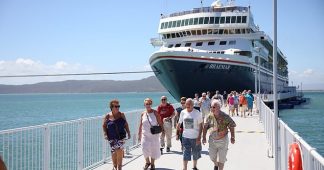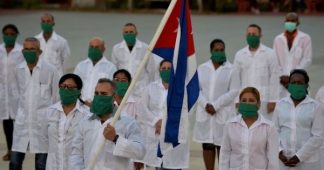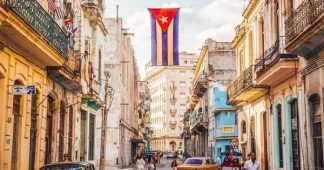by Francisco Dominguez
Jul. 3, 2020
When in 1868, Cuban slave-owner Manuel de Céspedes embarked on a 10-year nationalist uprising against Spain, the colonial master, he did not imagine he would be building not only the political bases of an independent Cuba but also the ideological blocks of a new Cuban identity.
Scholars correctly point out that Ten Years War (1868-78) turned out to be the “crucible of mass [Cuban] nationalism” since for the first time ever “blacks and whites… joined together” in the struggle for independence. About 70 percent of the fighters and officers were black or mulatto, and therefore, racist concerns that could make Cuba another Haiti, arose among the reluctant pro-independence white elite. In the second independence war (1895-98) Blacks may have contributed with over 85 percent of the rank and file soldiers, thus exacerbating white elite misgivings about independence.
It is well known that Cuba’s elite, upon being conceded a heavily US-protected independence in 1903, robbed blacks of the fruits of the victory they did more than anybody else to achieve. They were excluded from the police force (officers “had to be White, with fucking blue eyes…” – ex-slave in 1968 interview), but also from the civil service, parliament, and from just about every public sphere. Thus black people rebelled against discrimination in 1912, which was brutally crushed with about 3,000 of them were slaughtered.
Thus by 1959, on the eve of Fidel’s Revolution, the Black population was overwhelmingly poor, were overrepresented among the prison population, had the lowest educational levels, including high levels of illiteracy and chronic unemployment, inhabited squalid lodgements and neighbourhoods or tenements (solares), and were de facto discriminated in every other sphere of social, political and cultural life, which included even public spaces such as parks, i.e. they suffered from institutionalised racism. The promise of equality proclaimed by the republic was by 1959 thoroughly unfulfilled, despite formal laws that abstractly condemned racism and discrimination.
Fidel’s revolution ensured full employment on egalitarian bases, many of the jobs created where in industry, social services, health, education and high technology sectors, which recruited year after large number of skilled labour that the comprehensive, universal and free education system was churning out, year in, year out. The significance of this was monumental since by 1959 Cuba’s Black population was about half of the total. In this period 106 social programmes were implemented and instituted.
Additionally all forms of discrimination were abolished by the Cuban Revolution starting from an open debate on the issue to which Fidel invited intellectuals, academics, activists, workers, social organizations, members of political parties, and others. Among the many conclusions and decisions coming out of the debate came books, articles, and the promotion of important national and international events in Black History. The constitution prohibits any form of discrimination based on race, gender or ethnic origin, and all relevant institutions educate Cubans from a tender age on the ethical and philosophical principles that all human beings are equal. Cuban culture vigorously celebrates its African-ness through music, carnivals, and the very widespread practice of Santería, an Afro-Cuban religion brought by slaves to Cuba in the 17th century.
Many Black men and women since 1959, have had access to the highest levels of politics, science, education, technology and social life in general. A former British MP struck a powerful chord when he said this truth: Cuba is the only country on earth where the daughter of a sugar cane cutter, could become a medical doctor. Yet some racist social and cultural attitudes persist, but they pale into insignificance compared to advanced countries, such as the U.S. or the U.K. The current Cuban government led by Miguel Diaz-Canel has launched a comprehensive government programme, called AponteCommission, after José Antonio Aponte, leader of the 1812 slave rebellion, to combat it. Unlike ‘civilized’ countries where statues for slave traffickers and racist generals have been erected.
And, there is the role socialist Cuba has played in Africa, where its manifestations of solidarity have, on more than one occasion risked the very existence of the revolution itself, such as in Angola both in 1975 and 1987 when Fidel, at the request of the MPLA pro-independence movement requested military assistance, of which he sent sufficient to defeat both Western powers intervention and apartheid South African elite troops.
Cuba has contributed in very practical ways to the liberation struggle of Algeria, Ghana, Congo, Mozambique, Angola, Namibia, South Africa, and a few others. No wonder, the very first country Nelson Mandela visited after its release from prison in 1991,even though he received red-carpet invitations to many ‘weighty’ countries in the world, was Cuba. At the gigantic rally held in Havana to welcome him Mandela said:
“The Cuban people hold a special place in the hearts of the people of Africa. The Cuban internationalists have made a contribution to African independence, freedom, and justice, unparalleled for its principled and selfless character.From its earliest days the Cuban revolution has itself been a source of inspiration to all freedom-loving people.”
Yes, for Socialist Cuba Black Lives Do Matter.
* Dr Francisco Dominguez is a senior lecturer at Middlesex University, where he is head of the Research Group on Latin America. He is National Secretary of the Venezuela Solidarity Campaign. Dominguez came to Britain in 1979 as a Chilean political refuge. Ever since he has been active on Latin American issues, about which he has written and published extensively. He is co-author of Right wing politics in the New Latin America, Zed Books.











